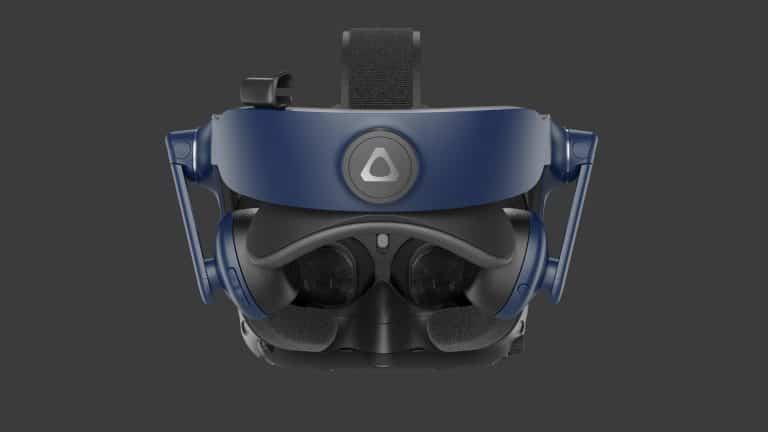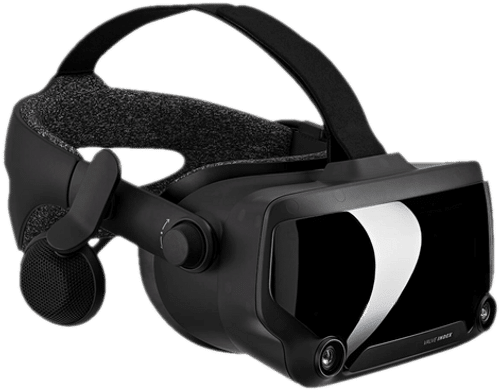In this guide, we compare the HTC Vive Pro 2 vs HP Reverb G2 vs Valve Index in full detail. We will let you know which VR headset you should buy.
We compare a number of key factors, including:
- Price
- Display
- Tracking
- Controllers
- Audio
- Headset Frame
and more!
At the bottom, we make a recommendation depending on what type of VR player you are. Comment below and let us know if we missed anything!
Latest in HTC: HTC Vive Flow: Everything You Need to Know
How to Buy the HTC Vive Pro 2
Click here to purchase the HTC Vive Pro 2 bundle from the official website.
You can also purchase the HTC Vive Pro 2, Base Stations, and controllers all separately off of Amazon. The HTC Vive Pro 2 works out to be the same price as the bundle.
[amazon box=”B092LBLT7P”]
[amazon box=”B07VZSDF3W”]
[amazon box=”B07QV3VLYJ”]
How to Buy the HP Reverb G2
Click here to buy the HP Reverb G2 off of the official website.
Purchase the HP Reverb G2 off of Amazon using the link below.
[amazon box=”B08TB5J7KY”]
How to Buy the Valve Index
Click here to buy the Valve Index off of the official website.
You can buy the Valve Index full kit off of Amazon below. The price can sometimes be inflated, but you will wait less time for delivery.
[amazon box=”B0876HSX6J”]
Price
When it comes to purchasing a new headset, pricing is one of the most important factors to look out for.
The HTC Vive Pro 2 costs $799 for just the headset alone. A full kit with two Base Stations and controllers is $1,399. This allows people who own the original Vive Pro to upgrade without buying new Base Stations and controllers.
The HP Reverb G2 costs $599 on the official HP website. It is available on Amazon for $659. This price includes the headset and the controllers. Base Stations are not required because the G2 uses inside-out tracking (more on that later).
The Valve Index is priced at $999 for the headset, controllers, Valve Index microphone, and Base Stations together. You can also purchase these separately for $500, $279 and $149 respectively.
Overall if price is your main factor, the HP Reverb G2 is your best bet. It saves a lot of costs by not requiring external Base Stations.
Advantage: HP Reverb G2

Display
The HTC Vive Pro 2 headset features two LCDs. With a resolution of 4896 × 2448 or 2448 x 2448 per eye, the Vive Pro 2 offers an immersive VR experience. The displays provide 5K video quality, 2.5K each. The Vive Pro 2 has a refresh rate of 120 Hz by default. For lower end computers, you can adjust this down to 90 Hz.
The HP Reverb G2 also has two LCD RGB displays. The resolution stands at 2160 × 2160 per eye. The LCDs have a refresh rate of 90 Hz. If you have a lower spec computer, you can still play VR games with the G2 because it supports half-resolution and 60 Hz modes.
Like the rest, the Valve Index is also equipped with a dual LCDs. With a 1440 x 1600 r×solution per eye, the Valve Index offers the lowest resolution compared to the Vive Pro 2 and HP Reverb G2. The Valve Index has a refresh rate of 120 Hz, with a fall-back option to 90 Hz. Valve Index also has an experimental 144 Hz mode for those with really good GPUs, like the new RTX 3070 Ti or 3080 Ti.
So HTC Vive Pro 2 vs HP Reverb G2 vs Valve Index, all provide a similar screen refresh rate. However, the HTC Vive Pro 2 has the highest resolution, slightly beating out the Reverb G2. The Valve Index is 2019 display hardware, which means that its resolution is starting to feel dated.
Advantage: HTC Vive Pro 2

Field of View
The Vive Pro 2 has a field of view (FOV) of 120 degrees horizontal, 90 degrees vertical, and 150 degrees diagonal.
The HP Reverb G2 comes with a horizontal field of view of 115 degrees.
The Valve Index comes with a horizontal field of view of 110 degrees.
At first glance, it looks like HTC Vive Pro 2 wins the field of view battle. However, the verdict is a little muddy here. For some reason, HTC changed the shape of the lens for the Vive Pro 2, giving the top and bottom a flat, straight edge. Before, they were rounded to match the roundness of your eyes and vision. On the Vive Pro 2, we notice the edge of the lenses more easily than the HP Reverb G2 or the Valve Index.
So for this reason, we actually like the field of view on the G2 the best.
Advantage: HP Reverb G2

IPD Adjustment
The IPD of a headset is the distance between the user’s pupils. The world average is about 63 mm. Most headsets give you the ability to adjust the IPD of your headset to match your specific needs.
The HTC Vive Pro 2 has granular IPD adjustment between 58 and 72 millimeters for a better and clearer viewing experience.
The HP Reverb G2 features an adjustable IP between 60 and 68 mm interpupillary distance. Users can adjust the interpupillary distance using a hardware dial on the bottom of the headset.
Likewise, the Valve Index has adjustable IPD between 58 and 70 millimeters.
For most people, all headsets will be acceptable for IPD between the HTC Vive Pro 2 vs HP Reverb G2 vs Valve Index. The lower and upper limits might become important if you have a unique face shape. If you’ve never had to consider it before, then you probably have nothing to worry about.
Advantage: HTC Vive Pro 2 (but most people will be fine)

Head Strap
The Vive Pro 2 headset is manufactured with a hard padded retractable strap. This strap connects to a plastic facial interface or foam. The rear of the headset is padded for comfortable wear. This makes the headset feel very light because the soft padding act like a counterweight.
The HP Reverb G2 head strap is soft and adjustable. You can easily adjust the straps on the sides and top of your head. HP added more cushion size compared to the original G1 which helps with more even weight distribution. Components are magnetic so that you can detach and install a custom fit if you need.
The Valve Index headset specs are excellent and have a comfortable and soft head strap and the valve index resolution is more than satisfactory. While in VR, this head strap will keep the headset in place on your head. For a more comfortable playing experience, you can purchase the Valve Index headset cotton cover. The cover protects the foam inside the headset from wear and tear.
Overall, the HP Reverb G2 and Valve Index share a very similar head strap design. This makes sense, since HP worked with Valve to create a comfortable fit. The Vive Pro 2 has gone all out with its head strap. The materials feel the most durable and the padding is high quality. It gets full marks from us.
Advantage: HTC Vive Pro 2

Audio
The Vive Pro 2 comes with removable stereo headphones. The headphones are on-ear, and they easily connect through USB-C audio output. Plus, a dual-microphone is embedded in this headset.
The HP Reverb G2 has off-ear speakers that pump audio directly into your ear without coming in contact with your head or ears. The G2 also comes with a headphone jack so that users can easily add their own in-ear or on-ear headphones.
For the Valve Index, the audio system is built with comfort in mind. As with the HP Reverb G2, the integrated off-ear headphones deliver great audio without coming in contact with your head or ears. The speakers are also adjustable so that you can easily move them to fit your ear size or shape.
Between the Vive Pro 2 vs HP Reverb G2 vs Valve Index, the winner largely comes down to preference here. A lot of early reviewers bashed the sound quality on the Vive Pro 2, but it’s not that easy to tell the difference. We like the idea of off-ear headphones that don’t come in contact with your head, but the sound can feel more echo-y in them.
Advantage: Draw

Controllers
The Vive Pro 2 headset uses the same standard wand controller as the original Vive Pro. The wands each weigh about 203 grams. The controllers feature an index trigger, face buttons, trackpad, and grip button. The controllers feature finger tracking, haptic feedback, and partial thumb tracking. Vive wands serve you for at least 6 hours before a recharge is required.
The HP Reverb G2 comes with two second-generation Microsoft Motion Controllers. These controllers are an improvement over the original headset with a button scheme that matches the performance of Oculus Touch controllers. The controllers emit infrared light for effective tracking in space. The motion controllers have a top analog stick, x and y buttons, and a back middle finger button. They also have an index finger button. A Reverb G2 controller lasts for 10 to 15 hours of battery life.
The Valve Index headset comes with the Index Controllers, popularly known as the Valve Knuckles. The Knuckles are packed with 87 sensors for improved tracking. You can track your hand movement, as well as individual finger positions. While in-game, these controllers let users interact with objects naturally. Gamers can use the controllers to move, pick up, grab, and even throw items as if they were in the real world. Like other controllers, they feature a familiar two buttons and two trigger setup.
The Valve Knuckles are the highest quality VR controllers on the market. Thousands of users have replaced their Vive controllers with the Knuckles, since they are interchangeable with each other.
Advantage: Valve Knuckles

Tracking
Outside-In
Both the HTC Vive Pro 2 and Valve Index feature outside-in VR tracking. Two SteamVR Base Stations are required in your play space. The Base Stations scan your room multiple times per second and track the position and movement of your VR headset in space.
Each base station can cover a range of 150 degrees and 110 degrees horizontal and vertical FOV respectively. To eliminate the chances of inaccurate tracking, the stations transmit laser beams more than 90 times in a second. The laser beam tracks the sensors on the headset. However, this headset doesn’t feature full-body tracking except you make use of Vive Trackers 2.0.
There are two generations of Base Stations you can buy. The 2.0 models are a bit smaller and provide faster scanning. They retail for $199, while the original version can be found for $130.
By default, the HTC Vive Pro 2 headset doesn’t feature any hand, face, body, or eye tracking. However, for extra accuracy, users can add the Vive Tracker or Vive Facial Tracker.
The Valve Index uses the same Base Station hardware as the HTC Vive Pro.

Inside-Out
On the other hand, the HP Reverb G2 is equipped with inside out tracking. External cameras on the G2 track the movement of your head and body in space. You do not need to purchase any additional base stations in order to play with the G2. This is the same tracking available on the Oculus Rift S and Oculus Quest headsets.
The HP Reverb G2 headset has 4 cameras nicely positioned on the exterior to track your movement and location in space. Out of these 4 cameras, 2 of them are located on the front of the headset, while the other 2 are on either side.
To track movement, the HP Reverb G2 uses information stored in the VR sensor built into the controllers and headset. When the controllers are out of view of the cameras, the software immediately uses artificial intelligence to predict the location of the controllers.
Not requiring Base Stations allows you to move the headset and play in different locations around your house. However, you have less accurate tracking. This is most noticeable in fast games like Beat Saber. Most people can never tell the difference.
We believe that inside-out tracking is the future of virtual reality. It appeals to more people and allows for more flexibility. So while the HTC Vive Pro 2 and Valve Index offer higher quality tracking, we are giving the advantage here to the Reverb G2.
Advantage: HP Reverb G2

Frequently Asked Questions
Which headset is good to buy? Is it the HTC Vive Pro 2 or Valve Index?
One of the crucial advantages of Valve is the Knuckles controllers, which offer the essential hand and finger tracking. But, we would highly recommend you buy Vive Pro 2 because it has more clarity, and you can experience seamless visuals. Be sure to pair the Vive Pro 2 headset with the Knuckles controllers.
How can I make my HTC Vive more comfortable?
You need to loosen the back and side straps to the loosest settings. From back to front, put on the headset and make sure the rear strap is at the back of your head. With one hand, hold on to the headset’s front and make adjustments to the side straps till the face cushion fits your face comfortably. This method should work well.
Will there be a Valve Index 2?
There hasn’t been an official confirmation or a release date given for the Valve Index 2. We expect to see an improved headset which will probably cost the same as the Valve Index.
Does the Valve Index have full-body tracking?
As of now, the Valve Index doesn’t have the functionality of full-body tracking. But, it is possible to track body movements with the help of Vive trackers.
Is HP Reverb G2 comfortable to use?
Designed with convenience and comfort in mind, the HP Reverb G2 delivers. It is lightweight, and the inside-out tracking, suitable fit, and replaceable face cushions make this headset very comfortable to use.
Conclusion
Between the HTC Vive Pro 2 vs HP Reverb G2 vs Valve Index, which headset is right for you?
If price is your number one factor, then you can’t go wrong with the HP Reverb G2. It is 40% cheaper than the Valve Index and half the price of the Five Pro 2. However, it still has a kick-ass display and can play all the same games. It uses inside-out tracking, which is a good thing if you want some flexibility in where you set up your VR play space.
The HTC Vive Pro 2 is the Cadillac of VR headsets. It features the best display out of any VR headset today and a comfortable frame for long-term play. The field of view has a few flaws, mostly due to bad design choices by HTC. Still, HTC Vive Pro 2 is the headset that will last you for the next 5 years if you want.
The biggest asset and advantage for Valve is the Knuckle controllers. They offer to best hand and finger tracking and are really high quality. We recommend that you buy the HTC Vive Pro 2 headset and pair it with the Knuckle controllers.
Otherwise, the display on the Valve Index is getting too dated and the price is too much of a premium for old hardware.

Hopefully this helps you make a decision! If you’ve purchased one of these headsets recently, comment below and let us know.


